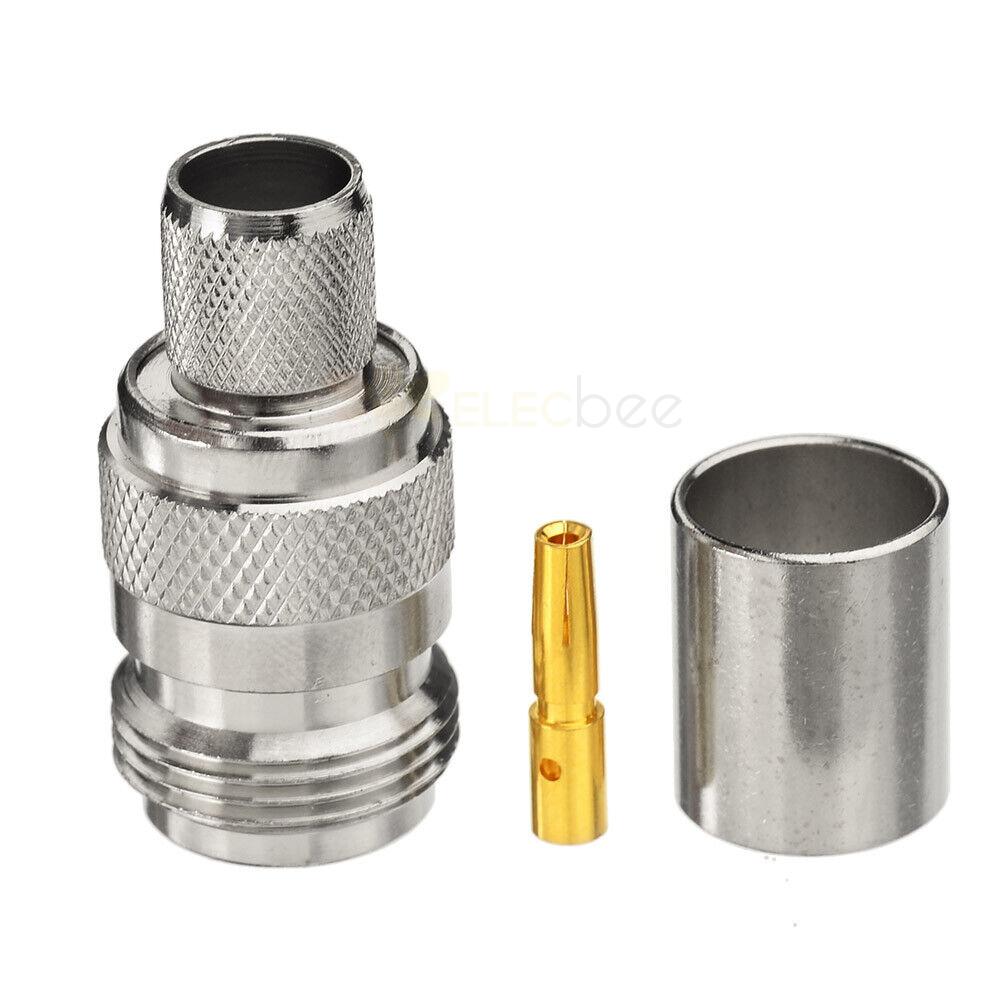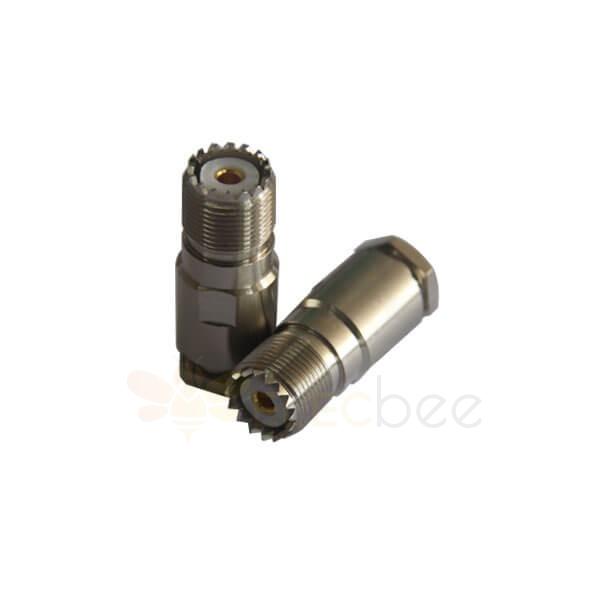连接器是电子系统中必不可少的组件,用于连接电路或设备的不同部分。 它们有不同的形状、尺寸和类型,每一种都为特定的应用而设计。 射频和微波应用中最常用的两种连接器是 N 型和超高频连接器. 但是,人们常常混淆这两个连接器是否相同。 在本文中,我们将探讨 N 型和 UHF 连接器之间的异同。
N 型和 UHF 连接器概述
N 型和 UHF 连接器都是同轴连接器,这意味着它们的内部导体被介电绝缘体和外部导体包围。 外导体通常是一个金属外壳,用作屏蔽,防止不需要的信号进入或离开连接器。 同轴连接器通常用于射频和微波应用,因为它们具有低损耗、高带宽和良好的屏蔽性能。

N 型连接器开发于 1940 年代,最初设计用于工防应用。 它们以发明者 Paul Neill 的名字命名,有时也称为 Neill-Concelman 连接器。 N 型连接器有两个版本:50 欧姆和 75 欧姆。 50 欧姆版本是最常见的,应用范围很广,包括无线通信、测试和测量以及广播。
另一方面,UHF 连接器是在 1930 年代开发的,最初用于无线电通信领域。 UHF 代表“超高频”,指的是它们设计用于运行的频率范围。UHF 连接器通常用于业余无线电、民用波段 (CB) 无线电以及一些商业和工业应用。

N 型和 UHF 连接器之间的物理差异
N 型和 UHF 连接器之间最明显的区别是它们的物理尺寸和形状。 N 型连接器比 UHF 连接器更大更笨重,其螺纹连接需要更大的扭矩才能拧紧。 N 型连接器的典型频率范围最高可达 11 GHz,但有些版本最高可达 18 GHz。
另一方面,UHF 连接器更小,并且具有更容易连接和断开的卡口耦合。 UHF 连接器的典型频率范围最高可达 300 MHz,但有些版本最高可达 1 GHz。 UHF 连接器比 N 型连接器更容易出现信号丢失和干扰,尤其是在较高频率下。
N 型和 UHF 连接器之间的电气差异
N型和UHF连接器的电气特性也不同。 N 型连接器的特性阻抗为 50 欧姆或 75 欧姆,具体取决于版本。 特性阻抗是连接器中电压和电流波的比值,决定了系统的信号完整性。 N 型连接器具有低 VSWR(电压驻波比),适用于大功率应用。
另一方面,UHF 连接器的特性阻抗为 50 欧姆。 但是,它们的 VSWR 高于 N 型连接器,尤其是在较高频率时。 这意味着 UHF 连接器不太适合大功率应用,更容易出现信号丢失和干扰。
N 型和 UHF 连接器之间的兼容性
尽管它们在物理和电气方面存在差异,但 N 型和 UHF 连接器有时可以互换使用。 这是因为 UHF 连接器的中心针脚比 N 型连接器大,这使得它们可以装入更大的 TypeN连接器. 但是,这可能会导致信号丢失和干扰问题,尤其是在较高频率下。
一般来说,除非没有其他选择,否则不建议将 Type N 和 UHF 连接器互换使用。 如果一定要一起使用,最好使用阻抗匹配、信号损失最小的适配器。
结论
总之,N 型和 UHF 连接器是射频和微波应用中使用的两种流行的同轴连接器。 它们具有不同的物理和电气特性,使其适用于不同的应用。 N 型连接器更大,具有螺纹连接,适用于大功率应用。 UHF 连接器更小,具有卡口耦合,适用于低功率应用。 尽管它们有时可以互换使用,但最好将它们用于预期的应用或与阻抗匹配的适配器一起使用。






